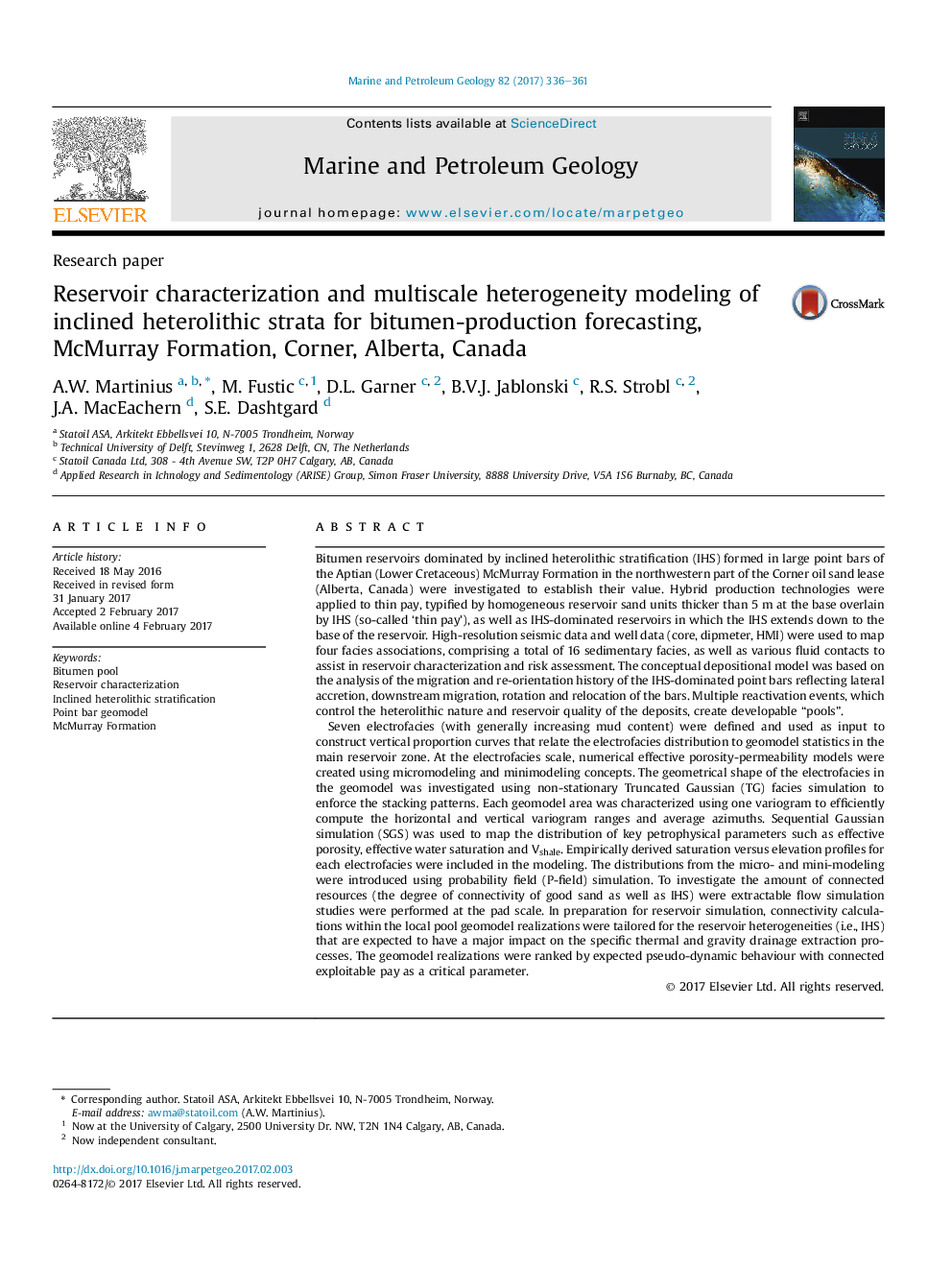| Article ID | Journal | Published Year | Pages | File Type |
|---|---|---|---|---|
| 5782112 | Marine and Petroleum Geology | 2017 | 26 Pages |
Abstract
Seven electrofacies (with generally increasing mud content) were defined and used as input to construct vertical proportion curves that relate the electrofacies distribution to geomodel statistics in the main reservoir zone. At the electrofacies scale, numerical effective porosity-permeability models were created using micromodeling and minimodeling concepts. The geometrical shape of the electrofacies in the geomodel was investigated using non-stationary Truncated Gaussian (TG) facies simulation to enforce the stacking patterns. Each geomodel area was characterized using one variogram to efficiently compute the horizontal and vertical variogram ranges and average azimuths. Sequential Gaussian simulation (SGS) was used to map the distribution of key petrophysical parameters such as effective porosity, effective water saturation and Vshale. Empirically derived saturation versus elevation profiles for each electrofacies were included in the modeling. The distributions from the micro- and mini-modeling were introduced using probability field (P-field) simulation. To investigate the amount of connected resources (the degree of connectivity of good sand as well as IHS) were extractable flow simulation studies were performed at the pad scale. In preparation for reservoir simulation, connectivity calculations within the local pool geomodel realizations were tailored for the reservoir heterogeneities (i.e., IHS) that are expected to have a major impact on the specific thermal and gravity drainage extraction processes. The geomodel realizations were ranked by expected pseudo-dynamic behaviour with connected exploitable pay as a critical parameter.
Related Topics
Physical Sciences and Engineering
Earth and Planetary Sciences
Economic Geology
Authors
A.W. Martinius, M. Fustic, D.L. Garner, B.V.J. Jablonski, R.S. Strobl, J.A. MacEachern, S.E. Dashtgard,
